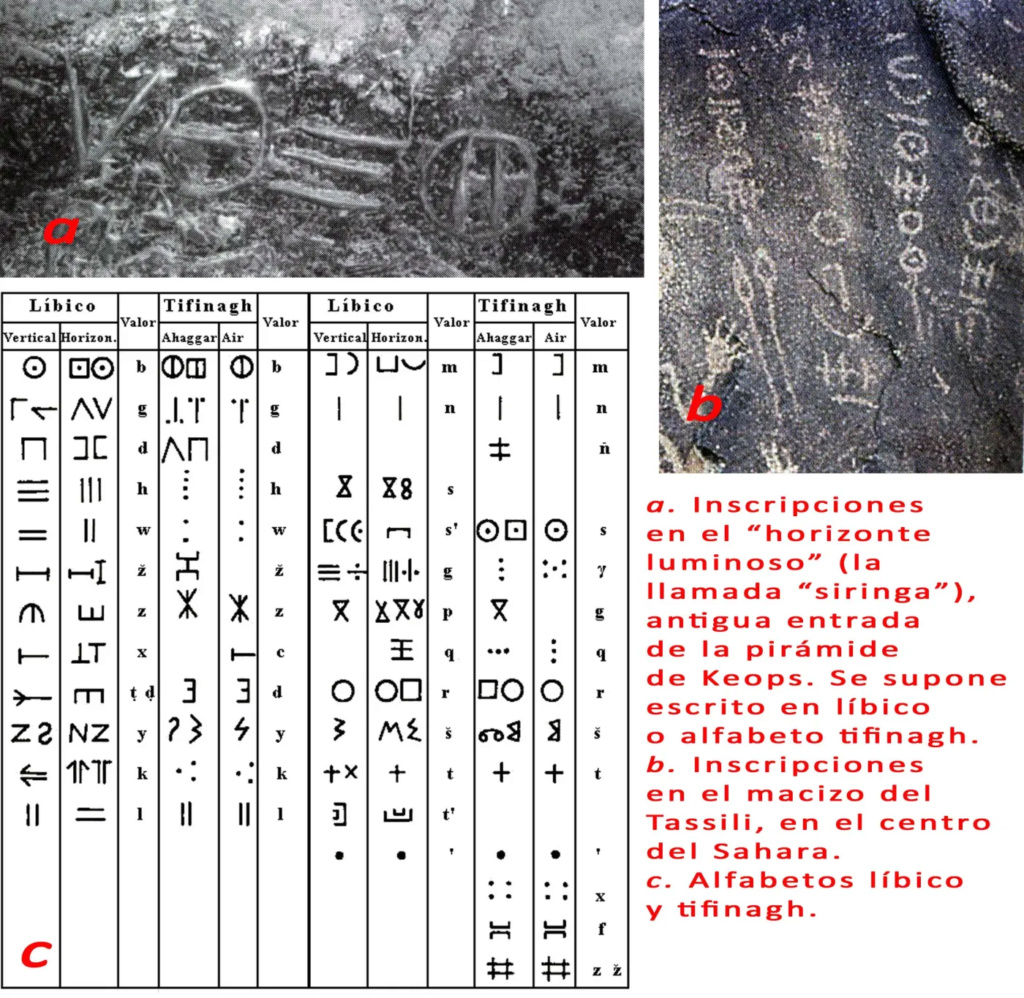Tamazight is the first language that God spoke to his prophet Moses, according to Islamic
heritage books

The title may seem shocking to many, but this is confirmed by Islamic heritage books, not any books. It is the books of the great scholars and interpreters of the Islamic nation, led by Imam Abd al-Rahman ibn al-Kamal Abi Bakr ibn Muhammad Sabiq al-Din al-Khudayri al-Asyuti, nicknamed Jalal al-Din al-Suyuti, born in Cairo, Egypt. He specialized in jurisprudence, interpretation, and history, as well as Imam Mahmoud Shihab al-Din Abu al-Thana’ al-Husayni al-Alusi, who was an interpreter, hadeeth, jurist, writer, and poet, nicknamed al-Alusi, born in Baghdad, Iraq.
Amazigh in Islamic heritage books
It came in the book Tafsir Al-Alusi (Ruh Al-Ma’ani fi Tafsir of the Great Qur’an and the Seven Muthani) 1-11 with indexes Part 4, Interpretation of Surat Al-A’raf, verses: 143-153: “
Al-Dailami narrated that Abu Hurairah raised it up, when my brother Musa went out to the monologue with his Lord, he spoke to him a thousand and two hundred words, and the first thing he spoke to him in Berberism was that he said: Oh Musa, and myself expressing: that is, I am God the Greatest. Moses said: O Lord, you gave the world to your enemies and prevented it from your friends, so what is the wisdom in that? So God revealed to him: I gave it to my enemies to wallow in it, and I prevented it from my friends to supplicate.
The source of the original book is here
https://books.google.dz/books?id=svx7DwAAQBAJ&pg=PT43&lpg=PT43&dq=%D9%81%D8%A3%D9%88%D9%84%20%D9%85%D8%A7%20%D9%83%D9%84%D9%85%D9%87%20%D8%A8%D8%A7%D9%84%D8%A8%D8%B1%D8%A8%D8%B1%D9%8A%D8%A9&source=bl&ots=ys3EVVb1uU&sig=ACfU3U1EAgKWAwtExQKCn8_JYfAVB99icg&hl=fr&sa=X&ved=2ahUKEwjX2Pf0xbbnAhUERxUIHQ5-DxUQ6AEwAXoECAUQAQ&fbclid=IwAR0YD8Jtk9GPM8JFiQTNN7S3PLvdQ7JSjOKjkwagS6PRJnN1l9Tp2NSqPgw#v=onepage&q=%D9%81%D8%A3%D9%88%D9%84%20%D9%85%D8%A7%20%D9%83%D9%84%D9%85%D9%87%20%D8%A8%D8%A7%D9%84%D8%A8%D8%B1%D8%A8%D8%B1%D9%8A%D8%A9&f=false
Interpretation of Al-Suyuti (Al-Durr Al-Manthur fi Tafsir Bal-Mathur) 1-7 Part 3 /
Interpretation of Surat Al-A’raf, verse 142, page 217: “
… And Ibn Abi Hatim came out on the authority of Ibn Ajlan, he said: God spoke to Moses with all tongues, and among what he spoke to was the tongue of the Berbers, so he said speak to him in Berber: I am God the Great
The source of the original book is here
https://books.google.dz/books?id=jTdMDwAAQBAJ&pg=PT215&lpg=PT215&dq=%D9%88%D8%A3%D8%AE%D8%B1%D8%AC+%D8%A7%D8%A8%D9%86+%D8%A3%D8%A8%D9%8A+%D8%AD%D8%A7%D8%AA%D9%85+%D8%B9%D9%86+%D8%A3%D8%A8%D9%86+%D8%B9%D8%AC%D9%84%D8%A7%D9%86+%D9%82%D8%A7%D9%84+:+%D9%83%D9%84%D9%85+%D8%A7%D9%84%D9%84%D9%87+%D9%85%D9%88%D8%B3%D9%89+%D8%A8%D8%A7%D9%84%D8%A3%D9%84%D8%B3%D9%86%D8%A9+%D9%83%D9%84%D9%87%D8%A7&source=bl&ots=kPCbOcS7gG&sig=ACfU3U0HetFy3QL-Jr_jYDHajzmhtsHnXA&hl=fr&sa=X&ved=2ahUKEwiQs_eF2LfnAhW5DmMBHZdgAeoQ6AEwAnoECAgQAQ#v=onepage&q=%D9%88%D8%A3%D8%AE%D8%B1%D8%AC%20%D8%A7%D8%A8%D9%86%20%D8%A3%D8%A8%D9%8A%20%D8%AD%D8%A7%D8%AA%D9%85%20%D8%B9%D9%86%20%D8%A3%D8%A8%D9%86%20%D8%B9%D8%AC%D9%84%D8%A7%D9%86%20%D9%82%D8%A7%D9%84%20%3A%20%D9%83%D9%84%D9%85%20%D8%A7%D9%84%D9%84%D9%87%20%D9%85%D9%88%D8%B3%D9%89%20%D8%A8%D8%A7%D9%84%D8%A3%D9%84%D8%B3%D9%86%D8%A9%20%D9%83%D9%84%D9%87%D8%A7&f=false
?Was what was meant by the Berber language the tongue of the people of North Africa, or the tongue of non-Arabs
In order to answer the question, we say that what is meant is the tongue of the people of North Africa for several considerations, the most important of which is that the Arabs did not use the term barbarism in the same negative (negative) sense used by the Greeks and Latins, who meant people outside their civilization, but rather the Arabs used it to denote a race other than the Arabs. He is the inhabitants of North Africa (Ibn Khaldun), in the same way they used the term Ajam to the peoples of Persia and the Romans to the peoples of the Latins. Coptic on the Egyptians...
It should also be noted the close and long-standing relationship between the ancient Egyptian language, as well as its people, with the Berber language, which is known in the linguistic scientific circles as Libyco-Berber. Afro-asiatic languages), in the thirties of the 19th century, the first French Berber double dictionary was drawn up by “venture de paradis”, and presented to him by the Egyptologist: “Jacques Champollion” who indicated in the introduction to this dictionary that Berber and ancient Egyptian are two close languages. And the Prophet Moses He lived and was raised in Egypt, whose people worshiped Berber deities such as (Amun), who spoke about his Libyan (Amazigh) by the Greek historian Herodotus, in the fifth century BC, who was worshiped in one of the Egyptian cities of Siwa. There is a strong linguistic assumption that Amun is from the Berber word. Aman” which means water, and Siwa from the verb “Yeswa” in Berber, meaning drink.Likewise, the goddess “Tanit”, whom the Berbers worshiped in the name of Tanit, confirmed and Las Page in the book The Gods of the Egyptians, and Herodotus, who made her birthplace in Lake Tritons, and others on her home in western Tunisia, and she is the goddess of fertility. feminization
Even the book of the Torah that was revealed to Prophet Musa Kalimullah, which is called in Hebrew Torah, is the same as the Amazigh term tura, which means written, which is derived from tira, meaning writing.
A large Berber presence in Egypt since ancient times
Egypt was a theater for the presence of the Libyan element * (the Amazigh) since ancient times. It came in some periods of time that all military and religious power became in the hands of the Amazigh element, and then the Pharaonic power later for more than two centuries, says Mustafa Kamal Abdel-Aleem, Studies in the ancient history of Libya, page 32,33. :
The Egyptian army became, starting from the era of the twentieth dynasty, composed of Libyans only. The kings of Egypt granted them gifts of land as a reward for them, and thus they were able to establish military communities in the country, and each garrison was headed by a Libyan president who bore the title of the great chief of what. "Ma" is an abbreviation for a confused noun
The marriage of the Pharaohs to the Amazigh women :
It is known that many of the kings of the Pharaohs were marrying Libyan women, especially the descendants of the beautiful tribes of Tamouh, with white skin, blond hair and blue eyes, among them the great Pharaoh Khufu (Khéops), one of whose wives appeared on the walls of the tomb of her son, Prince “Khufushaf”, with blond hair that was distinguished Berbers of erasure during the Fourth Pharaonic Dynasty (1) and even Princess Hetepheres, the second daughter of King Khufu, was blonde with blue eyes, (2) as well as the second daughter of Hetepheres (3). She was also one of the Libyan women, and Moses took from her the Berber Berber tongue that his Lord spoke to him as the Islamic sources brought it.
Amazigh writing in the pyramid of Khufu in Giza
Without forgetting that the ancient Amazigh script was written by Libyco-Berbère in one of the largest pyramids of ancient Egypt, which is the Pyramid of Khufu in Giza (4), much older than the time of Moses, which raises many questions about the Egyptian-Berber relations in the past.

Photo: Berber writing in the Pyramid of Khufu in Giza, Egypt. Source here
https://www.joseluisespejo.com/index.php/hidden-history/350-la-rodilla-de-hercules?fbclid=IwAR2iZb-wQFr_52ffFRntMWs9lNdmF5FlfQm0F-np8NlD85xqopZR-ZZEhG4
Genetic studies and DNA analysis
Finally, we refer to the recent genetic studies carried out by the National Geographic Company in Egypt, which confirmed on its official website that the DNA percentage of North Africans in Egypt, in which the Amazighs and Egyptians share, is 68 percent.
https://www.nationalgeographic.com/pages/topic/genographic
Islamic heritage books referred to the hadith of the Lord of Musa in Berber or Berber. It is information that Berber activists published on social media. We wanted with this publication to enrich the topic and open a general discussion in order to discuss and raise questions. The importance of this topic lies in the fact that the largest part of the Berber nation has expressed itself through this. The sacred ideas that made the majority of the Berbers accept voluntary Arabization (without talking about systematic and politicized Arabization) because of the sacred religious motive. Often, some of the sheikhs of the Islamic religion in our time have been promoting through their platforms the idea that Arabic is the language of the people of Paradise, despite the lack of any evidence to that effect. The Sheikh of Islam Ibn Taymiyyah himself denies this altogether. So why do these imams not talk about the sanctity of the Berber language in terms of it being the first language with which God spoke to His Prophet Moses, for example, as it was brought by the Islamic sources that interpreted the Qur’an? In terms of that all languages are from God and all of them are beautiful and sacred in the eyes of their people?
Written by Professor Mustafa Silent
Margins:
* Regarding the term Libyan / Amazigh, we point out that the term “Libya” means in academic historical studies North Africa, and “Libyan” means the North African person, and regarding the term Amazigh, Berber and Berber, see the article: “ Correcting the historical fallacy circulating about the ethnic name Berber for the nation Tamazight _
1- Fakhry, A. (1942), «The Egyptian Desert Volume I», Bahria Oasis, Cairo, Boulaq Government Press, p. 7
2- John Wilson (1955), Egyptian Civilization, translated by Ahmed Fakhry, Cairo, Egyptian Renaissance Bookshop, p. 177
3- Gardner, A. (1945), Ancient Egyptian anomastica, Oxford, University Press p. 115
4- Some “Cabalistic” inscriptions around the Great Pyramid's original entrance: dating the most ancient Libyco-Berber inscriptions.
Giancarlo Negro. Sahara: prehistory and history of the Sahara. 13, 2001-2002, pages 148-165.
Source : websites

